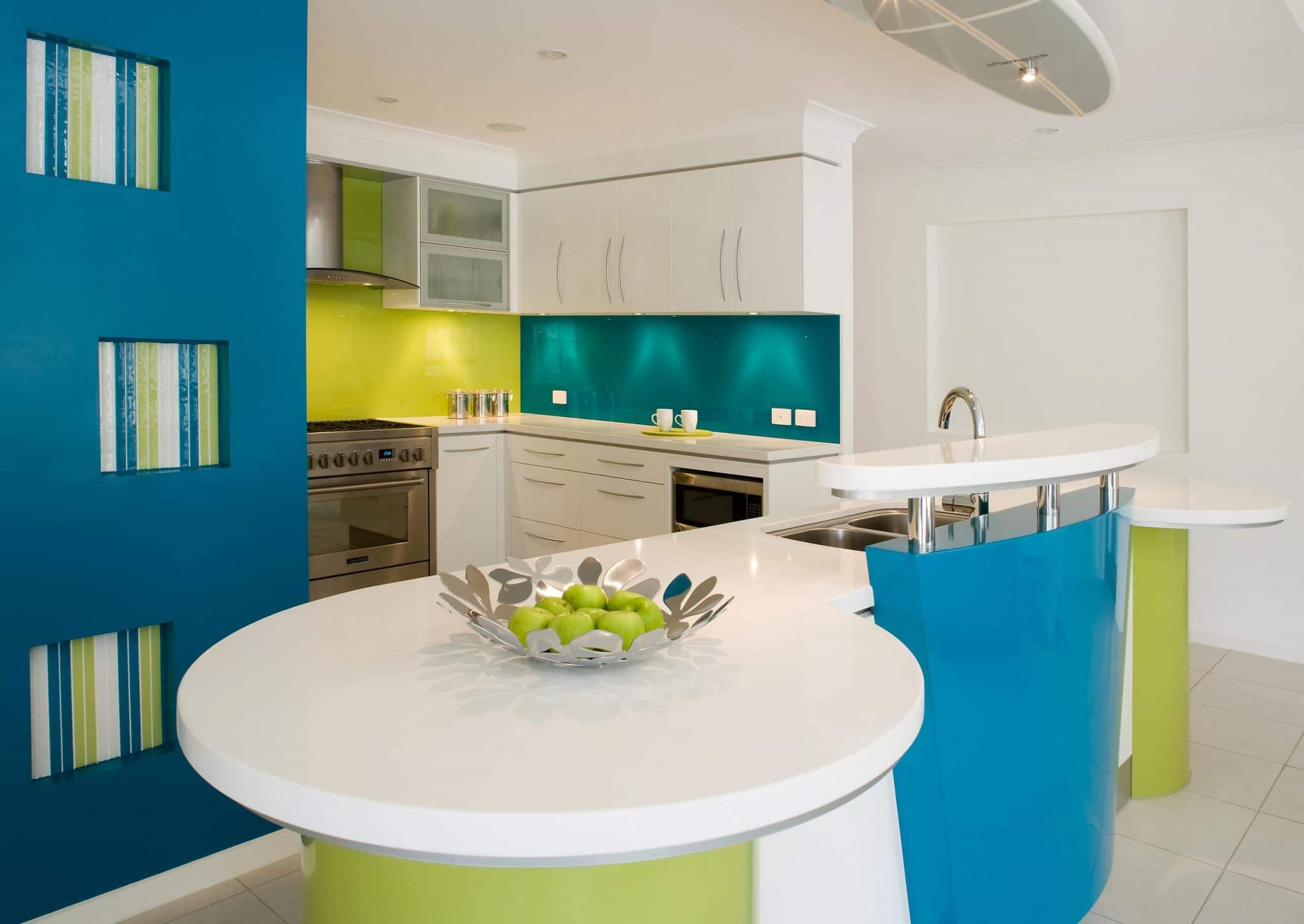
20 Jul Colors of a Kitchen
What to consider when creating a color scheme
What do you need to know when choosing colors for the kitchen? Maybe you could save some time and opt for the basic black and white design. But, would that look okay with wooden kitchen cabinets? It’s time to step back, and think about it…
There are no rules to choosing a color scheme for the interior design of your kitchen. Nothing is set in stone. Some folks hire designers to help them through. There’s certainly no shame in that. Others trust their instinct, their ability to assemble their kitchen tastefully. Whichever route taken, it’s good to be mindful of certain things that can help make the choices easier.
At a whopping 40%, the most popular color themes for today’s kitchens are based around wood cabinets. It is followed by two-tone cabinets (at 30%), then antique white (22%), while the remaining percentage is represented by other assorted styles. If you need help painting or renovating your kitchen, you may hire a local handyman.
When one considers that cabinets really dominate the look of a kitchen, and are in fact, responsible for occupying 40% of the room, it makes sense to let them be the starting point from which to build a color palette. Pick one that speaks to you, that you respond to. Finding a fit for your personality is the perfect way to begin.
Of course, you’ll want to pick your appliances with the cabinets in mind (or vice-versa). Here’s the thing – they are profound focal points. The sink, the refrigerator… you don’t want to just randomly insert any models of any colors. You want to apply the same intuition and discretion you’re using for the big picture when choosing them. Considering appliances as part of the overall design scheme is an oft-overlooked yet important tactic. All of the finest kitchens benefit when attention is paid to such details.
Countertops are close to eye level and highly visible, you’ll want to be careful how you choose one. It is always best to look at countertops physically, in person. Catalogs or online photography won’t give you a 100% accurate representation. When shopping for countertop materials, take along a sample of your chosen cabinetry. This will enable you to look at the surfaces side by side, a sure-fire way of making the best, most educated decisions.
Next, you’ll want to consider what to do with your flooring. Obviously there are a ton of material options. Choose it first – whether it be laminate, tile, or hardwood flooring. All the while be mindful of the style you’ve established so far. Next, choose the most applicable color or design. Pick whatever looks good to you, but if you are hesitant about a choice, it’s best to go with the more conservative option. You can rarely cross the line with a moderate approach.
Now we’re getting to the nitty-gritty – the finer details. The concept is nearly finished. It’s time to ponder what’s to be done with the backsplash. There are a ton of options. And while you can be as free as you’d like with its design, don’t stray too far from the color motif you’ve already set. At this point you’re thinking of blending, not clashing. There may be a need for a range hood, too, and you can get just as creative with those.
Ultimately you’ll have to address the walls. They play a profound role now. They can provide the perfect last touch, and ideally, that’s what you will have them do. Look at swatches, take your time and choose a color and shade that effortlessly complements the related palette you’ve established. Look at the floors, cabinets and appliances (and factor in colors of adjoining rooms) and find the color that strikes the perfect balance.
All that’s left is a bit of fun stuff – decorative hardware. Color and designs of faucets, cabinet handles/knobs and bin pulls come in such a wide variety, they can add touches of the modern, Victorian, gothic, etc… you might want to add light fixtures or a pendant chandelier, as well. It’s your creation, choose wisely and have fun!






Sorry, the comment form is closed at this time.